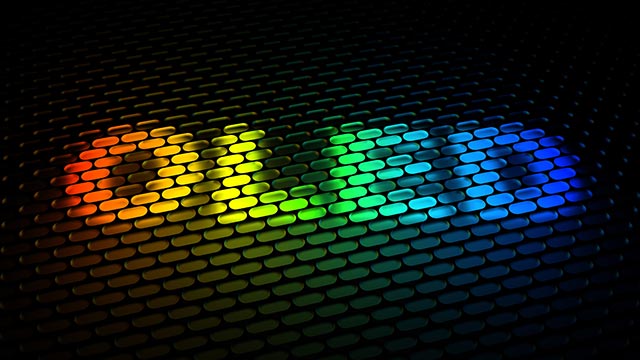Researchers create a more energy efficient organic LED
02/04/2019 / By Edsel Cook

Organic light-emitting diodes (OLEDs) are going to be much more energy efficient from now on. Korean researchers say they have found a way to improve the external quantum efficiency of an OLED unit.
As their name implies, OLEDs are light-emitting diodes that use organic materials to generate light. This makes them more eco-friendly while retaining most of the advantages of an LED.
Like normal LEDs, OLEDs use less energy than conventional light sources. They are also flexible enough to fit inside a thin device. These qualities have earned them spots in mobile devices, high-end television sets, and other display units.
As their performance improved over the years, OLEDs have been evaluated as potential light sources for vehicles and large spaces. The problem is that they are also more energy inefficient than ordinary LEDs.
If an OLED and an LED ran on the same amount of electricity, the OLED would produce less light. This lower efficiency undermines their potential as large light sources for buildings and vehicles. (Related: LED stool lights up to warn slouches, help prevent back pain.)
Improving the energy efficiency of organic LEDs
Researchers have been working hard to make OLEDs every bit as efficient as LEDs. Some of their efforts have produced examples that can match the inorganic LEDs.
In order to raise their energy efficiency, these prototypes were fitted with either a macroscopic lens or complicated internal nanostructures. Both options are fairly expensive, which goes against the concept of the OLED as a cheap item. They also ruin the thinness and flexibility of the device, which would undermine the thinness and flexibility prized by the industry.
The team from the Korea Advanced Institute of Science and Technology (KAIST) picked a third option. They used an external scattering medium to increase the energy efficiency of their OLED prototype. Their successful modification reportedly pushed the external quantum efficiency of the device past 50 percent, which matches an LED.
Unlike the lens or nanostructures, the light scattering medium will not disrupt the planar geometry of the OLED. It will also not compromise the flexibility or the electrical properties of the device. Last but not least, it can be produced in large numbers while keeping the costs low.
Using light scattering techniques to increase the amount of light produced by an LED is not new. However, the KAIST team also provided a thorough and analytical methodology that helped them design the most energy-efficient structure.
Combining an OLED and its external scattering layer greatly boosts efficiency
In the past, the external scattering layer was treated as a separate item from the OLED it augmented. The Korean researchers decided to treat the OLED and the layer as a single device. This way, they were able to unite the math behind the light scattering phenomena and the optical model that gave an OLED its ability to produce light.
Their methodology lets them identify the characteristics of many light-emitting devices with different structures. They were able to predict the right mix of scattering layers and OLED shapes for maximum energy efficiency.
With this theoretical data in hand, they proceeded to create a new light scattering film. They paired this experimental medium with OLEDs whose orange emitters have a high degree of horizontal dipole orientation.
The external quantum efficiency of the modified OLEDs reached 56 percent. The power efficiency was 221 lumens per Watt of power. The researchers stated that these are some of the best efficiencies ever realized on an OLED that isn’t using a macroscopic lens or internal structures that extract light.
Sources include:
Tagged Under: electronic devices, energy efficiency, LED technology, light sources, light-emitting devices, new technology, organic LED, quantum efficiency, science and technology


















